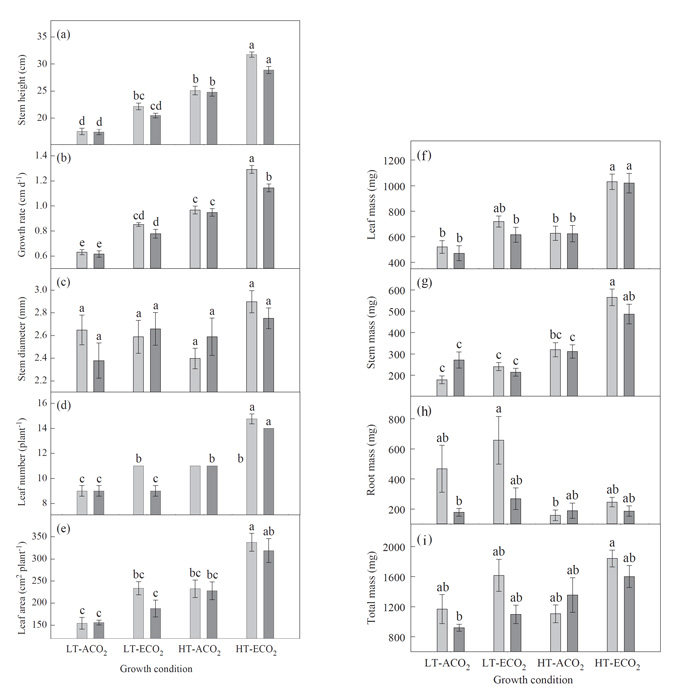| Follow @co2science |
Paper Reviewed
Reardon, M.E. and Qaderi, M.M. 2017. Individual and interactive effects of temperature, carbon dioxide and abscisic acid on mung bean (Vigna radiata) plants. Journal of Plant Interactions 12: 295-303.
Mung bean (Vigna radiata) is an important pulse food commonly used in crop rotations because of its ability to symbiotically fix nitrogen from the atmosphere and increase the nitrogen content of soils. It is also grown for human consumption due to its relatively high concentration of folate (vitamin B9), which provides multiple health benefits to humans (folate deficiency has been shown to cause fatigue, mouth sores, poor growth, diarrhea, depression, confusion, anemia and fetal brain defects). Given its importance to human diet and health, Reardon and Qaderi (2017) set out to investigate how this crop species will respond to changes in climate and atmospheric CO2 concentration that are projected for the end of this century.
To accomplish their objectives, the pair of Canadian researchers grew 8-day-old mung bean plants in controlled environment chambers for three weeks. Growing conditions included two temperature regimes (low: 26/22°C day/night; high: 32/28°C day/night), two atmospheric CO2 concentrations (400 or 800 ppm) and two applications of the plant stress hormone abscisic acid (no application and 10 µl every other day). Then, at the end of the treatment period, they measured a number of growth-related parameters.
Plants treated with abscisic acid (ABA) were found to be slower growing and were shorter with fewer leaves and smaller root mass than non-ABA-treated plants. However, Reardon and Qaderi report there was no significant three-way interaction between ABA, temperature and CO2 for any of the measured plant parameters. In contrast, when acting alone, both temperature and elevated CO2 improved mung bean growth (see Figure 1 below). At higher temperatures, the plants "grew faster and were significantly taller, had more larger leaves, and consequently greater leaf, stem and total mass" than the plants grown at lower temperatures. Similarly, they write that "plants at elevated CO2 grew faster, were taller, and had thicker stems, more larger leaves than plants at ambient CO2 and, in turn, greater aboveground biomass."
With respect to the interactive effects of CO2 and temperature, Reardon and Qaderi found that "plants grown under higher temperatures at elevated CO2 had the most leaves and greatest leaf and stem mass, whereas plants grown under lower temperatures at ambient CO2 had the fewest leaves and least leaf and stem mass." Additionally, they report that "higher temperatures and elevated CO2 increased [the] total biomass of plants. Consequently, the two scientists conclude that, "under future climate conditions, mung bean plants benefit from the interactive effects of elevated CO2 and increased temperature during [the] vegetative stage." And there are probably a lot of farmers and consumers of this important pulse, as well as health advocates, which welcome such benefits!

Figure 1. Growth and dry mass of one-month-old mung bean (V. radiata) plants. Light gray bars represent the non-ABA-treated plants and dark-gray bars, the ABA-treated plants. (a) stem height; (b) growth rate; (c) stem diameter; (d) leaf number and (e) leaf area, (f) leaf mass; (g) stem mass; (h) root mass and (i) total mass. Data are means ± SE of 12 samples from 3 trials. Bars surmounted by different letters within each panel are significantly different (P < .05) according to Scheffé's multiple-comparison procedure. Source: Reardon and Qaderi (2017).




